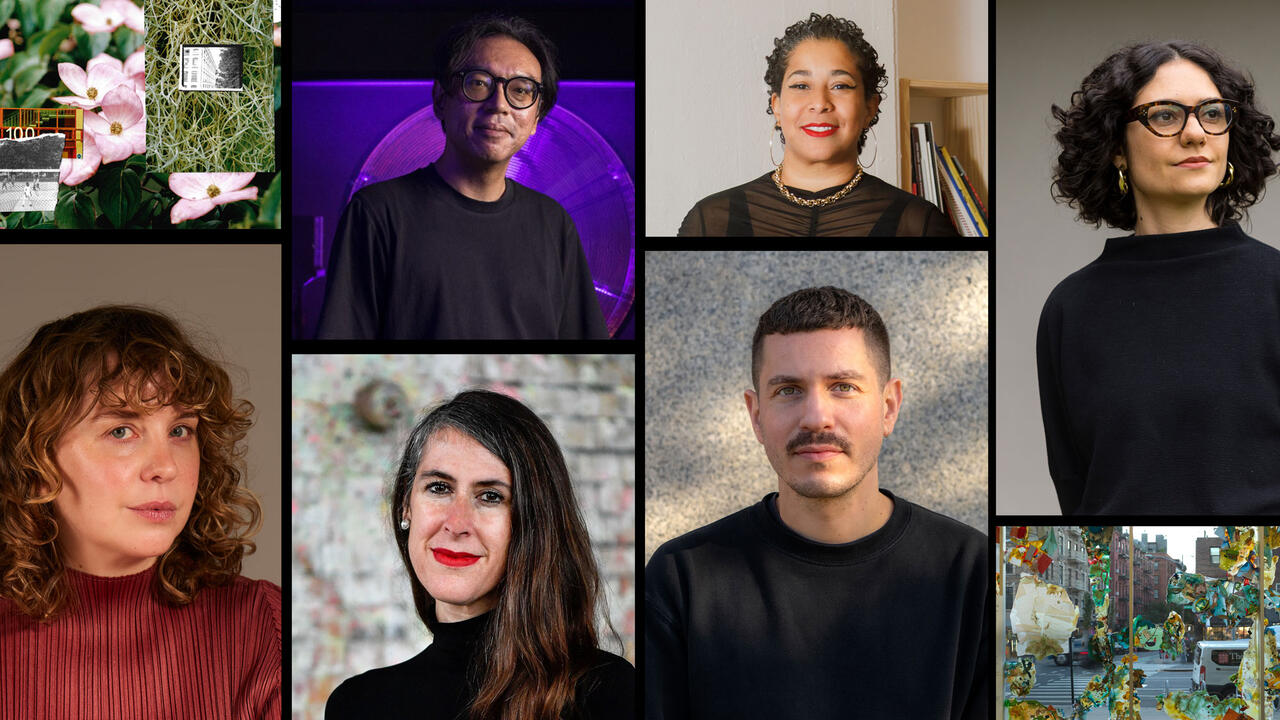Shhh ...
Glittering etched mirrors sit where water would once have pooled in many of the Victoria & Albert Museum’s ancient stone wellheads, fonts and fountains. These reflectors, made by Felicity Powell and collectively titled Drawn from the Well (2004), aim to give a new life to inanimate carved fixtures. It is typical of the institution’s recent attempts to rethink the spaces encompassed by the building’s enormous footprint. ‘Shhh...’ is another of these sexing-up strategies: a series of specially generated sound pieces by contemporary musicians and artists, designed for amplifying or aurally illustrating rooms of the artist’s choice.
The headphone-led ‘soundwalk’ is an increasingly common means of intensifying appreciation of space, of cultivating a sense of sharpened perception of the ‘soundmarks’ that distinguish spaces and sites. Janet Cardiff’s aural dérives in Canada and in London’s East End, or the series of Soundwalk CDs produced by New York collective Oversampling Inc., for example, draw the participant into occasionally threatening situations where the prescriptive vocal directions between your ears lead you to intersect with the contingencies of the day. ‘Shhh...’ was sited in a more controlled environment. Visitors were handed an iPod-type device equipped with infra-red detector, a pair of headphones and a map. Over the next two hours or so you were invited to follow a suggested route to different spaces, at each of which LED triggers instructed your pod to activate the relevant track.
Former Cocteau Twin Elisabeth Fraser’s Expectant Mood (all works 2004) provided a reverberant choral introit among the Raphael cartoons. Nearby, Jeremy Deller’s Celia’s Tour featured a cutesy recording of a young girl discussing her favourite exhibits in the China galleries. It verged on the twee, although there was an eerie sensation of seeing an object through the eyes of another as you peered closely at an elaborate jade box in the shape of geese, or women’s binding-shoes, while a child described them to you.
The successful pieces convincingly transformed a space and its contents. Jane and Louise Wilson’s Body Drop, a repeat recording of boys trying to climb a building site, resonated against the Cast Court’s full-size plaster casts of Roman victory columns, medieval monuments and portals (it ended with an ominous thud). Simon Fisher Turner’s Infantile inhabited the tile room, the building’s most stunning location, in a domed lantern high over the entrance way, with a curious hole in the floor that lent a window on the ticket booths far below. Turner’s collage of voices and bell tones echoed the diversity of tiles from all over Europe while gorging on the dome’s incredible acoustic.
Brit-rapper Roots Manuva, the most unlikely participant, actually created the most powerful intervention. Sited in the museum’s mirror and gilt-slathered replica of the music room in the Duke of Norfolk’s former town house, You Rang, Me Lord, was a moralistic rap excoriating the British class system: ‘Hyde Park, mudlark, stilton at the Hilton ... Judgment shall be served on every living thing.’ Gillian Wearing’s fragment of an interview with a member of the V&A staff similarly set a dynamic resonance jangling in hallowed space. Sitting in the murk of the wood-panelled reconstruction of a room in Bromley-by-Bow, east London, you listened to a personal response to the space, gradually revealing a borderline unhealthy obsession with a past that he doesn’t want to see ‘chipped, knocked or altered [...] “Future” is a dirty word.’ It is a suspicion easily harboured about employees of institutions such as the V&A, and it intensified as you realized that the owner of this voice had probably passed the spot where you were standing several times already that day.
The least interesting pieces were simply electronica-lite that sound-tracked space with the familiar ‘Walkman effect’. Faultline’s glacial Sculpture Gallery 1, 2, 3 attempted to animate the decontextualized, disembodied busts, Elizabethan tombs and Saxon gods uprooted from Enlightenment gardens populating the European Sculpture Galleries; Persian musician and Björk collaborator Leila supplied an offhand audio montage of café hubbub and finicky beats in a couple of foyers; Cornelius’ Techno pop Music For Glass Room was the crystalline coda in a room full of whimsical coloured-glass fripperies.
The premise of ‘ambient’ sound or music implies passivity: the mic picking up whatever it will. Searching for David Byrne’s intrusions accompanying wanderings down unprepossessing ramps and in Victorian water closets with ringing phones and plopping taps, you felt manipulated into passing souvenir shops while being invited to ‘have a break and cup of tea if you like’ in the pricey café. It confirmed an uneasy feeling that the set-up did more to promote the V&A’s contents than to explore the vast array of sound design and practice that is currently in play. A greater disruption and attempt to interrogate the spaces, or disorientate the listener, might have sharpened up the overall experience.













